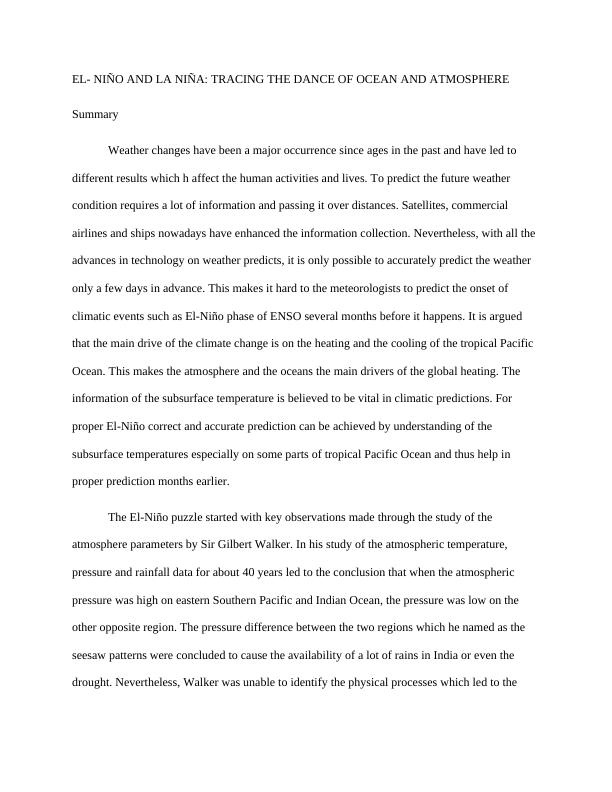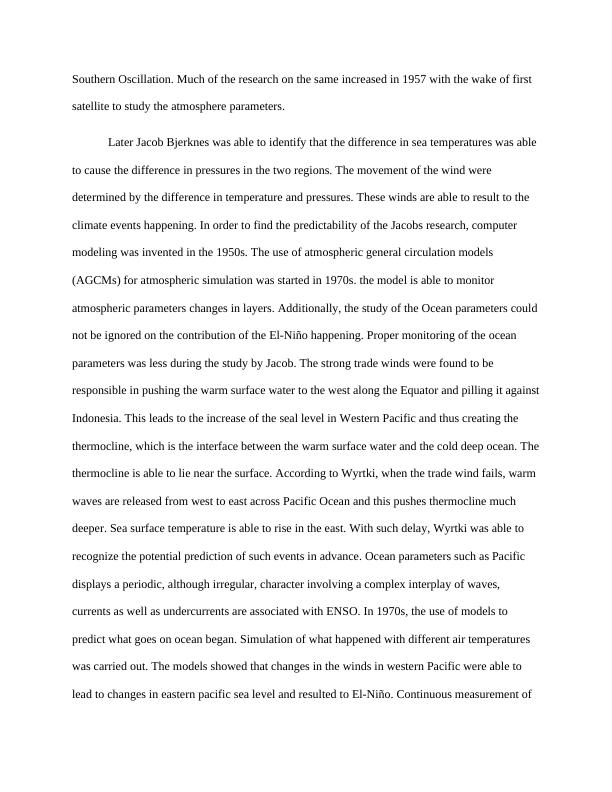El Niño and La Niña: Tracing the Dance of Ocean and Atmosphere
Tracing the dance of ocean and atmosphere
4 Pages1235 Words378 Views
Added on 2023-06-10
About This Document
This article explores the causes and prediction of El Niño and La Niña events through the study of ocean and atmospheric parameters. It covers the history of research on these events, the technology used to monitor them, and the importance of real-time data collection for accurate predictions. The article emphasizes the need for comprehensive data to mitigate the disastrous effects of these events.
El Niño and La Niña: Tracing the Dance of Ocean and Atmosphere
Tracing the dance of ocean and atmosphere
Added on 2023-06-10
ShareRelated Documents
End of preview
Want to access all the pages? Upload your documents or become a member.
Weather Systems Analysis
|10
|1800
|94
El Niño–Southern Oscillation
|36
|11062
|179


